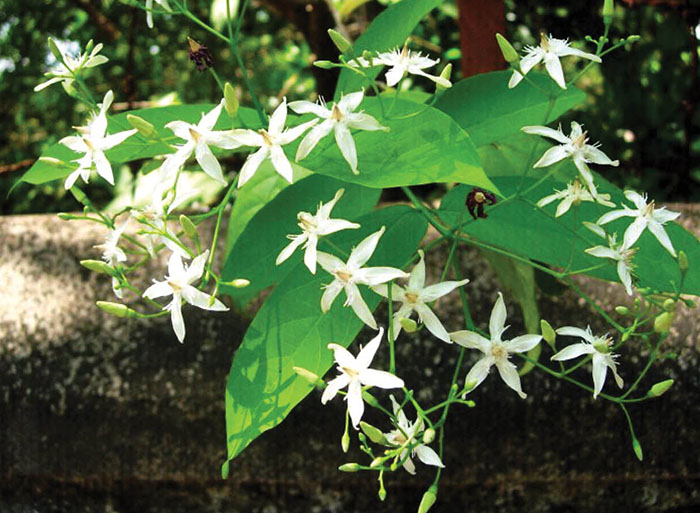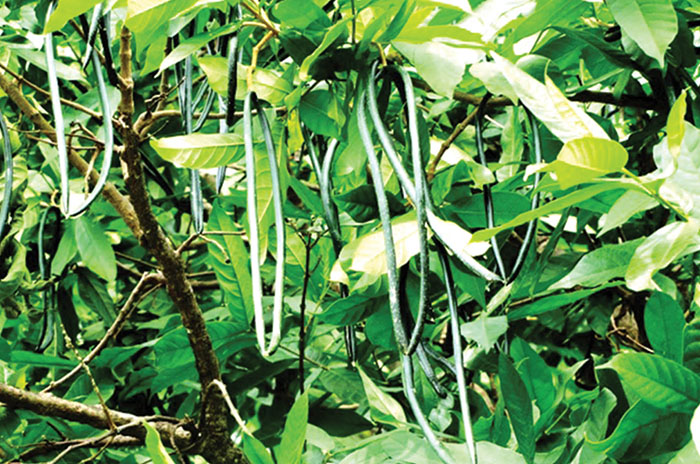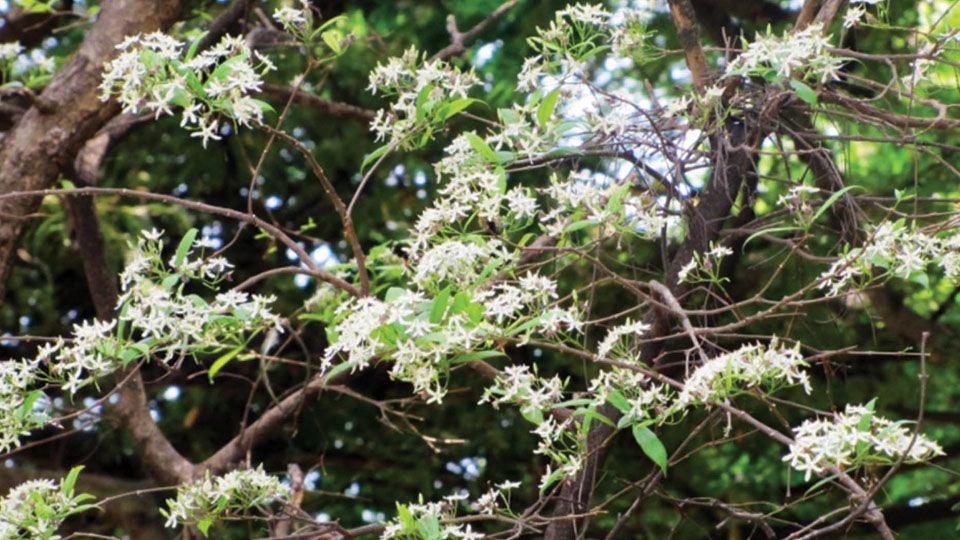Text & photographs by Dr. Mahadeswara Swamy, Scientist
There are trees known as multipurpose trees (MPT) used for different purposes. A few provide timber for commercial purposes but endowed with medicinal properties besides being ornamental. “The Ivory Wood” tree, used for making Channapatna toys, belongs to this category. The wood turns to ivory colour with age. That is why the name.
A tree from the wild introduced to urban environs, it is one of the most beautiful avenue trees of Mysuru and attracts passersby during summer months with its handsome blooms of white, star-shaped vanilla scented showy flowers. Other common names are ‘Sweet Indrajao’, ‘Pala’, ‘Dyer’s Oleander’ or ‘Dyer’s Indigo’. Vernacular names are — Kannada: Beppale, Alemara, Kodesige, Ajamara, Kodamurki; Tamil: Vetpalai, Irumpalai; Telugu: Repala, Tedlapala, Jediapala; Malayalam: Mayilampaala, Nettampala; Hindi: Dudhi, Indrajau; Sanskrit: Krishna Katuja. The scientific name is Wrightia tinctoria, belonging to the family Apocyanaeceae. The generic name ‘Wrightia’ is in honour of William Wright, the 19th Century Scottish Physician and Botanist. The specific name “tinctoria” refers to “tinct” in Latin meaning “dyed, tinged”. The tree is native to India, Sri Lanka and Myanmar. It is common in deciduous forests of North West and Central India and Southern Peninsula.
“Wrightia tinctoria” is a small or medium-sized deciduous tree with slender cord-like branches often attaining a height of 25 ft! The tree exudes a cream coloured latex. The bark is light grey, scaly and smooth but becomes fissured when old. The leaves are simple, in opposite pairs, softly downy with a very short stalk, elliptic, ovate with an acute or oblong base with prominent lateral nerves (5-10 pairs). The flowers are arranged in sloppy terminal cymes, appear along with new leaves. They are fragrant, white, about 3 cm wide with twisty petals. Sepals are glabrous, glandular inside, oblong with membranous margins. The petals salver-shaped with a short corolla tube with an appendage (corona) of numerous linear scales around the stamens, which form a cone at the centre. The ovary 2 carpelled, free, many ovuled, usually with a toothed basal ring. Fruit technically called a pair of cylindrical follicle, very long, tapering at both ends and joined at the tips (special characteristic) contains seeds appended with hairs (basal coma).

Useful Tips
- It is a choice tree for medicinal gardens and forest areas.
- A petite tree, it is suitable for small avenues and a perfect specimen for limited space and can be easily grown as a houseplant.
- For best growth, the tree needs full sunlight and moderate watering. Does not do well in water stagnation.
- It is often confused with “Holarrhena antidysentrica” and can be distinguished by (a) The organisation of its paired follicle, which is joined at the end only and (b) Presence of corollary corona (scaly & hairy like structures) at the throat of the corolla tube surrounding the stamens.
- It attracts butterflies and humming birds.
- Sometimes, the tree is subjected to fungal diseases/ pests and can be overcome by spraying common pesticides and fungicides.
Uses
Toys: The highly valuable wood is used for making celebrated “Channapatna toys”. The timber is uniformly white and used for all classes of turnery. It can be made into pen-holders, combs, splints, bobbins, printing blocks etc. Wood is also used for stained wood inlay work.

Medicinal uses: Described in classical Ayurvedic texts as Shwetha kutaja and seeds known as Indrayava, the plant parts (leaves, bark and seeds) possess therapeutic properties and used in ayurvedic preparations. The plant is supposed to pacify vitiated tridoshas: fever, stomach ache and skin diseases. Leaf extracts for psoriasis is a traditional remedy in the Siddha system of medicine. The fresh leaves are pungent and relieve tooth pain when chewed. The bark is specially used in piles, skin diseases and biliousness. The plant parts also posses anti-dandruff properties and hence used in hair oil preparations.
Other uses: A drop of the sap from foliage preserves milk against curdling without spoiling its taste! A blue dye called ‘pala indigo’ is prepared from the leaves. The leaves are relished by cattle and sheep besides being useful as green manure.
Gardening
The tree is a moderate light demander and often occurs as an undergrowth species in deciduous forests and produces root-suckers. Under cultivation it grows well in any garden soil. It can be easily propagated using seeds and stem cuttings. Raise the seeds in a seed pan or a seedbed. Transplant when they are 6-8 leaved to a pot or a polybag containing garden soil. Transplant them to a planting location during the next rainy season. Stem cuttings root readily in sand under the sun. The tree can be micro-propagated by tissue culture also.
Where to see
On many roads, parks and wastelands; more specifically at Kukkarahalli Lake area and Bogadi Road near the entrance to Manasagangothri campus.
Mob: 97429-91057; e-mail: [email protected]








Recent Comments